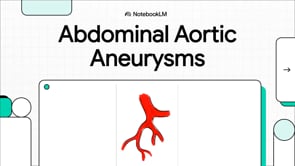This comprehensive review article explains that pheochromocytomas and paragangliomas are rare tumors that can cause dangerous blood pressure spikes and mimic many other conditions. These tumors occur in about 0.6 people per 100,000 annually and require specialized diagnostic testing, careful surgical planning, and genetic evaluation since up to 40% of cases are linked to inherited gene mutations. Treatment involves surgical removal with specific preoperative medication management, and long-term monitoring is essential due to the risk of recurrence or additional tumors.
Understanding Pheochromocytoma and Paraganglioma: A Patient's Guide to Diagnosis and Treatment
Table of Contents
- Introduction: Rare But Important Tumors
- Historical Background and Terminology
- Symptoms and Diagnosis
- Medical Imaging Approaches
- Treatment Options and Surgical Approaches
- Genetic Causes and Inherited Syndromes
- Long-Term Management and Monitoring
- Study Limitations
- Patient Recommendations
- Source Information
Introduction: Rare But Important Tumors
Pheochromocytomas and paragangliomas are rare tumors that both fascinate and challenge doctors. These tumors secrete excessive amounts of catecholamines (stress hormones like adrenaline), which can cause symptoms mimicking more than 30 different medical conditions. If left undiagnosed, these tumors can be life-threatening, making rapid recognition essential for patient safety.
The diagnostic process involves complex biochemical testing and specialized imaging studies to locate these tumors. While surgical removal is the primary treatment, preparing for surgery involves careful medication management, and the choice of surgical technique can vary depending on the tumor's characteristics. Recent advances in understanding the genetic basis of these tumors have added another layer of complexity to managing individual cases.
Historical Background and Terminology
The first detailed description of pheochromocytoma came from German pathologist Max Schottelius in the late 19th century. He documented the case of an 18-year-old woman who died in 1886 after experiencing panic attacks, rapid heartbeat, and excessive sweating. Later research confirmed this patient had multiple endocrine neoplasia type 2 (MEN2), making this the first documented case of this genetic syndrome.
The term "pheochromocytoma" was coined in 1912 by German pathologist Ludwig Pick. According to the 2017 World Health Organization classification, pheochromocytomas are tumors that develop in the adrenal glands, while paragangliomas develop outside the adrenal glands. These tumors cannot be distinguished by microscopic examination alone—their location determines their classification.
Under the microscope, these tumors show a distinctive pattern called "zellballen," consisting of well-developed tumor cells growing in nests with supporting tissue and specialized sustentacular cells. Special staining techniques show chief cells stained with chromogranin and sustentacular cells stained with S100 protein.
Symptoms and Diagnosis
These tumors occur in approximately 0.6 people per 100,000 each year. The classic symptoms include headaches, palpitations (racing heartbeat), and profuse sweating. However, many patients experience anxiety and panic attacks, which are common in the general population, making it challenging to identify those with these rare tumors.
With increased use of medical imaging, many adrenal masses are discovered incidentally during tests for other conditions. Additionally, asymptomatic cases are increasingly identified through family history evaluations and genetic testing for known mutations.
The diagnostic approach requires both biochemical proof of excessive catecholamine production and anatomical documentation of the tumor. Measuring plasma fractionated metanephrines (breakdown products of adrenaline hormones) shows 97% sensitivity and 93% specificity across 15 different studies. Measuring fractionated catecholamines directly is less sensitive but clearly elevated values (more than twice the upper normal limit) are also diagnostic.
Several factors can cause false positive results:
- Medications including tricyclic antidepressants, antipsychotics, SSRIs (serotonin reuptake inhibitors), SNRIs (norepinephrine reuptake inhibitors), and levodopa
- Acute illness or physical stress
- Certain clinical circumstances that temporarily increase catecholamine levels
For accurate testing, doctors recommend tapering and discontinuing tricyclic antidepressants and other psychoactive medications at least 2 weeks before hormone level assessments.
Medical Imaging Approaches
Imaging approaches differ based on three clinical scenarios outlined in the research:
Scenario 1: Patients presenting with symptoms and significantly elevated metanephrines or catecholamines require abdominal contrast-enhanced CT or MRI. If abdominal imaging is negative, doctors may recommend MRI of the skull base, neck, chest, and pelvis.
Scenario 2: For incidentally discovered adrenal or retroperitoneal masses with attenuation greater than 10 Hounsfield units on unenhanced CT, biochemical testing is necessary. If levels are clearly elevated, contrast-enhanced CT or MRI is performed. For masses larger than 10 cm or located outside the adrenal gland, additional imaging may be needed to search for other tumors or metastatic disease.
Scenario 3: Patients identified as carriers of disease-causing mutations require specific monitoring protocols based on their genetic mutation type.
Functional imaging techniques are particularly effective for locating these tumors:
- 123I-MIBG scintigraphy (a specialized nuclear medicine scan)
- 68Ga-DOTATATE-PET-CT (a advanced combined PET and CT scan)
- 18F-L-DOPA-PET-CT (another type of combined functional and anatomical imaging)
Head and neck paragangliomas typically present as painless, slowly growing masses, often as carotid body tumors or vagal paragangliomas. Some cause conductive hearing loss and pulsatile tinnitus (ringing in the ears synchronized with heartbeat) when located in the jugulotympanic region. Advanced cases may involve cranial nerve deficits. Catecholamine hypersecretion is rare in these specific tumor locations.
Treatment Options and Surgical Approaches
Surgical removal remains the cornerstone of treatment for these tumors. Most are resected based on biochemical evidence and CT or MRI documentation. The major considerations involve timing of surgery and choice of surgical approach.
Traditional preoperative management involves combined alpha- and beta-adrenergic blockade to control blood pressure and prevent dangerous spikes during surgery. This typically includes:
- Alpha-blockers: phenoxybenzamine (started at 10 mg twice daily, increased to 30 mg three times daily) or doxazosin (started at 1 mg daily, increased to 10 mg twice daily)
- High-sodium diet (approximately 5000 mg daily) and generous fluid intake (about 2.5 liters daily)
- Beta-blockers: extended-release metoprolol (started at 25 mg once daily, increased to 100 mg twice daily) added only after effective alpha-blockade to control heart rate
However, a 2017 prospective study involving 276 patients (110 with blockade, 166 without) found no significant differences in maximal intraoperative systolic pressure, hypertensive episodes, or major complications between the two approaches. This has opened discussion about possibly operating without preoperative blockade in selected cases, though no consensus exists and current guidelines still recommend blockade for all patients.
Surgical techniques have evolved significantly. Until 1996, open laparotomy with complete adrenal removal was standard. Today, endoscopic approaches with transabdominal or retroperitoneal access have become standard due to shorter operative times, fewer complications, and shorter hospital stays. Tumors up to 5 cm can be safely removed endoscopically, though larger tumors require individual consideration based on characteristics and surgical expertise.
For bilateral adrenal pheochromocytomas, organ-sparing surgery introduced in 1999 helps patients avoid lifelong glucocorticoid and mineralocorticoid replacement therapy. Approximately one-third of one adrenal gland is sufficient for normal hormone production. Tumors in unusual locations (pelvic, thoracic) can often be removed using minimally invasive techniques.
Head and neck paragangliomas require individualized interdisciplinary approaches including surgery, stereotactic radiosurgery, external radiation therapy, or monitoring strategies. Surgical resection offers the only potentially curative option, but advanced cases frequently involve lower cranial nerve deficits after surgery.
Genetic Causes and Inherited Syndromes
Genetic research has identified at least 19 susceptibility genes for these tumors since the RET proto-oncogene was first identified in 1993. Approximately 40% of patients with these tumors carry germline mutations in known susceptibility genes. The research details 10 clinically relevant syndromes:
MEN2 (Multiple Endocrine Neoplasia Type 2): Caused by RET gene mutations. Up to 50% of patients develop pheochromocytomas, virtually all develop medullary thyroid carcinoma, and 20% of those with MEN2A (but not MEN2B) develop hyperparathyroidism.
Von Hippel-Lindau Disease: Caused by VHL gene mutations. Patients develop various tumors including retinal angiomas, central nervous system hemangioblastomas, renal cell carcinoma, and pancreatic tumors in addition to pheochromocytomas.
Neurofibromatosis Type 1: Caused by NF1 mutations. Patients develop neurofibromas, café-au-lait spots, and other tumors alongside potential pheochromocytomas.
Paraganglioma Syndromes 1-5: Caused by mutations in SDHD (syndrome 1), SDHAF2 (syndrome 2), SDHC (syndrome 3), SDHB (syndrome 4), and SDHA (syndrome 5) genes. These involve different inheritance patterns and tumor risks.
Hereditary Pheochromocytoma Syndromes: Caused by TMEM127 and MAX gene mutations, primarily leading to adrenal tumors.
Additional genes associated with these tumors include EGLN1, EGLN2, KIF1B, IDH1, HIF2A, MDH2, FH, SLC25A11, and DNMT3A, though these require further clinical evaluation.
Long-Term Management and Monitoring
Long-term management varies significantly based on genetic status and previous treatment. The research provides specific monitoring recommendations:
For patients who had surgical resection, metanephrine levels should be measured postoperatively and then annually. Those who had bilateral adrenal surgery with cortical-sparing techniques require documentation of normal glucocorticoid function using cosyntropin stimulation testing.
Mutation carriers require tailored surveillance:
- RET mutation carriers: Annual metanephrines, serum calcitonin, and calcium monitoring
- VHL mutation carriers: Yearly metanephrines, MRI of brain/spinal cord/abdomen, and ophthalmoscopy
- SDH mutation carriers: Varied protocols based on specific gene involved, typically including annual metanephrines and periodic MRI or PET-CT imaging
- MAX/TMEM127 mutation carriers: Yearly metanephrines and abdominal MRI every 3 years
- Neurofibromatosis Type 1: Metanephrine testing when hypertension or symptoms develop
Patients with metastatic disease may experience prolonged survival even without surgery, living with their tumors for many years while managing symptoms medically.
Study Limitations
This comprehensive review article acknowledges several limitations in current knowledge about these tumors. The rarity of these conditions means most studies involve relatively small patient numbers, making large-scale randomized trials difficult to conduct.
The debate around preoperative adrenergic blockade continues without consensus, reflecting the need for more research comparing outcomes with different approaches. Surgical techniques continue to evolve, and optimal approaches for larger tumors (over 5 cm) remain somewhat controversial and dependent on individual surgeon expertise.
Genetic understanding continues to expand, with newly identified genes requiring further clinical correlation. The long-term outcomes for patients with metastatic disease managed without surgery need additional study to establish optimal management protocols.
Patient Recommendations
Based on this comprehensive research, patients with or at risk for these tumors should consider the following recommendations:
- Seek specialized care: These rare tumors require management by endocrinologists, endocrine surgeons, and geneticists familiar with their complexities
- Complete thorough diagnostic testing: Proper diagnosis requires both biochemical testing and appropriate imaging studies
- Consider genetic counseling and testing: Since 40% of cases involve inherited mutations, genetic evaluation can guide treatment and family screening
- Discuss preoperative preparation options: Talk with your medical team about the benefits and risks of adrenergic blockade before surgery
- Commit to long-term monitoring: Regular follow-up with biochemical testing and imaging is essential due to recurrence risks
- Inform family members: If a genetic mutation is identified, relatives may benefit from screening
- Report symptoms promptly: Headaches, palpitations, sweating, or hypertension episodes should be reported to your healthcare team
Source Information
Original Article Title: Pheochromocytoma and Paraganglioma
Authors: Hartmut P.H. Neumann, M.D., William F. Young, Jr., M.D., and Charis Eng, M.D., Ph.D.
Publication: The New England Journal of Medicine, August 8, 2019, Volume 381, Pages 552-565
DOI: 10.1056/NEJMra1806651
This patient-friendly article is based on peer-reviewed research from The New England Journal of Medicine and has been developed to help patients understand complex medical information about these rare tumors.





